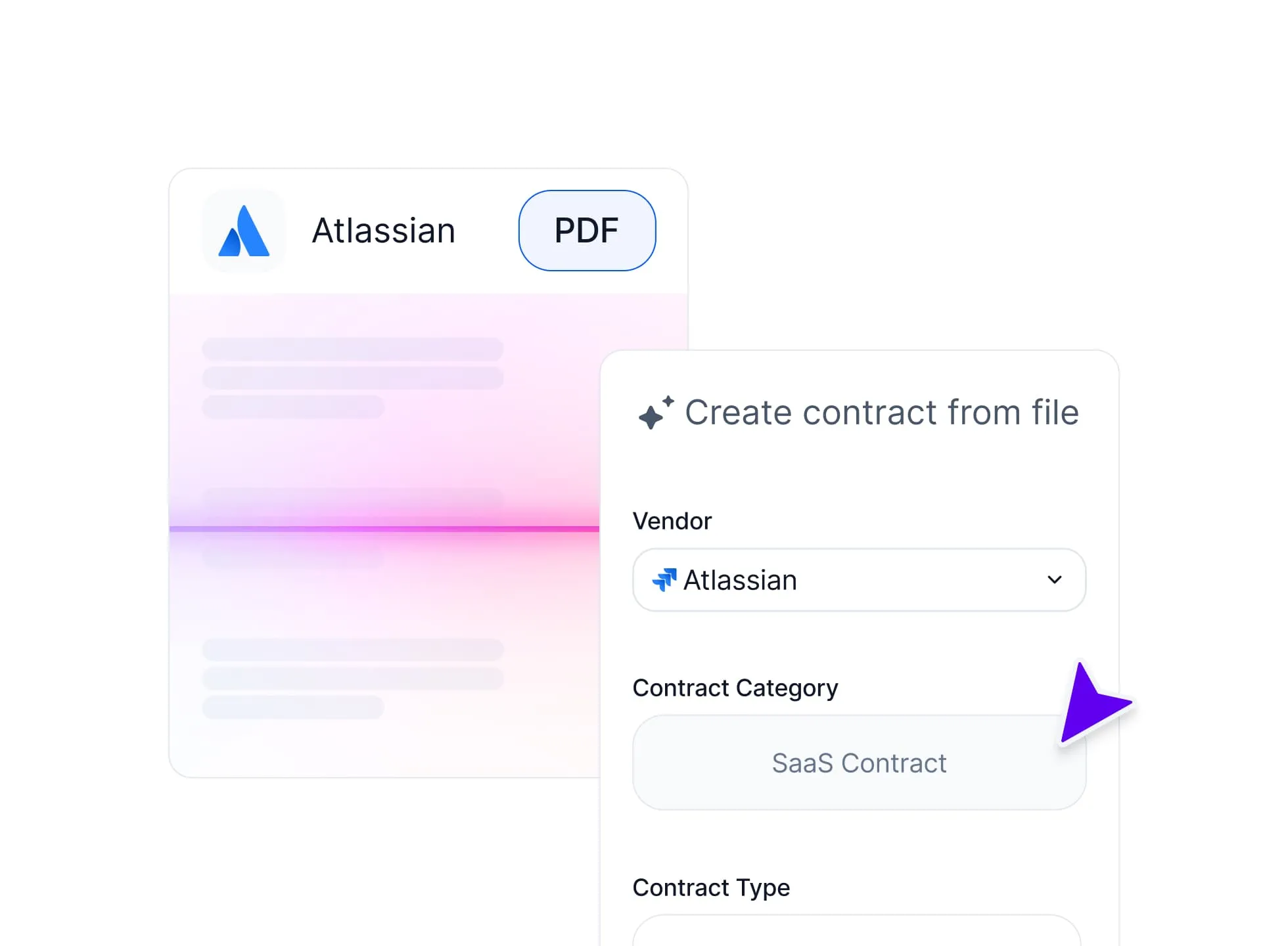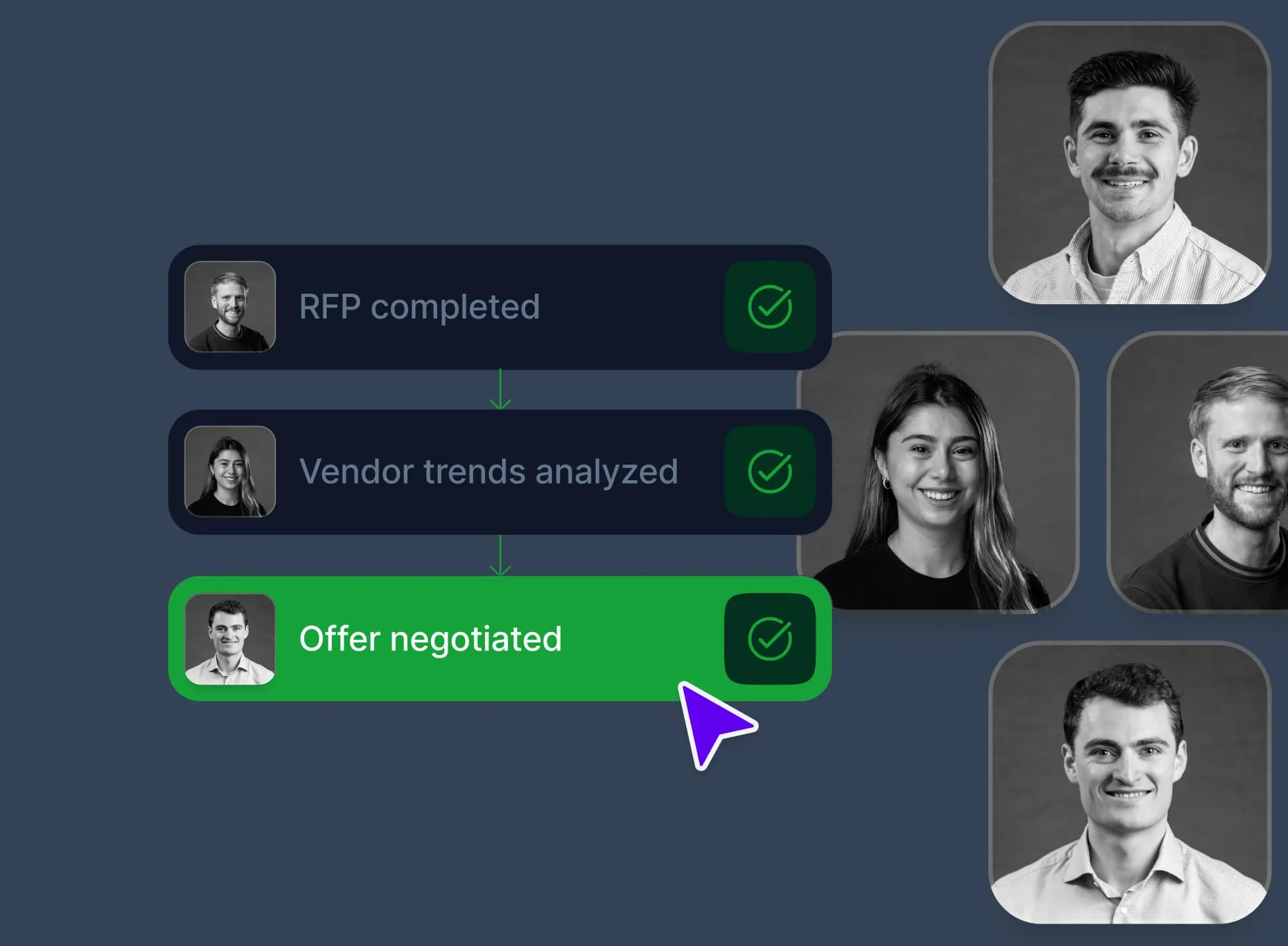Take control of your contracts and never miss a renewal
Alerts and notifications. Single source of truth for all your vendor documents.

Manage contracts with ease
One clear view for all your contracts

Contract details in a click
Automated data entry

Vertice AI

Negotiation

Product Overview

See how simple procurement can be
Let us show you how to halve your cycles and cut costs by 20%.
The need-to-knows about Vertice
SaaS contract management is the process of overseeing the entire contract lifecycle for software-as-a-service agreements – from negotiation and execution to compliance tracking and renewals. With the right platform, teams can gain visibility into subscription terms, license usage, and renewal dates, helping to control spend and reduce risk.
Effective contract lifecycle management ensures that all SaaS agreements are tracked from negotiation and execution to renewal and where necessary, contract termination. By maintaining a structured contract repository, organizations can monitor service-level agreements (SLAs), enforce compliance requirements, and avoid costly auto-renewals or missed obligations.
SaaS contract management platforms also provide visibility into license utilization and overall subscription spend, enabling data-driven decisions that optimize costs, reduce risk, and support strategic procurement planning.
Vertice centralizes all SaaS contracts and tracks renewal dates in real time, using AI-enhanced intelligent workflows to surface upcoming renewals and route them to the right stakeholders for action.
Our platform also leverages pricing benchmarks and contract terms from more than 16,000 global vendors, while highlighting underutilized licenses and inactive tools to optimize spend, prevent wastage, and enable more strategic, data-driven decisions.
Yes – the best SaaS contract management tools include risk assessment, security questionnaire tracking, and audit log capabilities. These features help procurement teams evaluate vendor reliability, monitor compliance over time, and manage contractual liabilities.
Vertice provides a centralized contract repository and automated workflows for approvals and renewals, while delivering AI-driven insights to identify optimal contract terms and pricing. This approach saves time, reduces manual risk, ensures compliance, and gives teams a clearer view of their SaaS spend.
